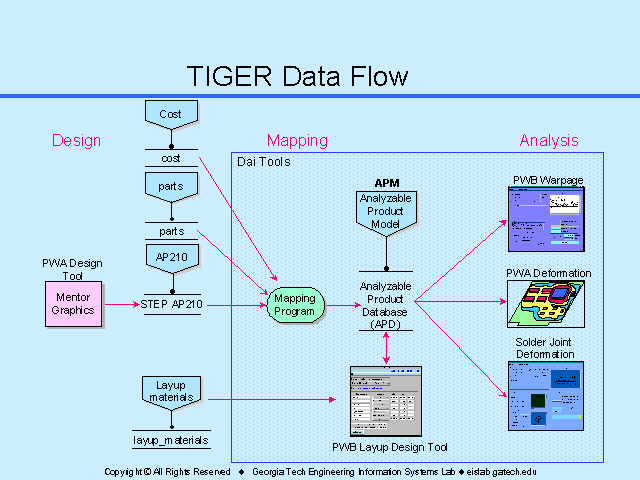Slide 12 of 26
Notes:
- In general, no single product model can satisfy the data requirements of all the analyses being supported.
- As a consequence, analysis applications normally feed from a variety of data sources which, in turn, conform to different data models.
- These data models may be standard data models (such as STEP APs) or arbitrary.
- This mix of standard and non-standard representations of data is due to the fact that there will be invariably some analysis that requires information not supported by any existing standard representation (obviously, it would be impractical to develop a new standard representation for each new analysis situation)
- As shown in this slide, the product data that drives the TIGER analyses is contained in four different STEP files.
- The first file is an AP210 file, obtained by translating data created with Mentor Graphics into STEP. This file is the main source of product information, containing geometric and assembly information about the board and the electrical components on it, as well as the electrical interconnections among them.
- However, this file does not provide information as to the functional information of the component (i.e., whether it is a resistor, a capacitor, etc.). This information is contained in a second file (called “parts”) which is a simple database of parts with their part numbers and their function.
- The third file (“cost”) contains cost information about different parts in the PWA.
- Finally, the fourth file (“layup_materials”) contains information about commercial layup materials used to make up the board.

